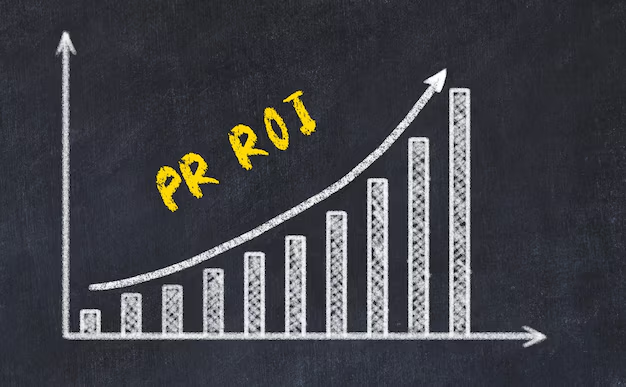Navigating the World of Options Trading: Is It Really Profitable?
There's a buzz in the financial markets that surrounds options trading. Some tout it as a road to significant riches, while others deem it as a risky territory best left to the experts. So, is options trading profitable? The truth lies somewhere in between and warrants an exploration into its opportunities, risks, and strategies. In this guide, we'll uncover the factors contributing to the profitability of options trading, empowering you to decide if it’s a world worth venturing into.
🧐 Understanding Options: A Quick Primer
Before diving into profitability, it's crucial to grasp what options are. Options are financial instruments that provide the right, but not the obligation, to buy or sell an underlying asset at a predetermined price before a specified expiration date. There are two types of options:
- Call Options: These give the holder the right to buy the asset.
- Put Options: These provide the right to sell the asset.
Unlike stocks, which entail ownership, options are contracts that derive their value from the performance of an underlying security.
📈 Factors Influencing Profitability in Options Trading
1. Education and Knowledge
Understanding the Market: An in-depth understanding of the market trends, fundamentals, and technical analysis is essential. Successful options trading often hinges on predicting the market direction and volatility.
Continuous Learning: The financial markets are perpetually evolving. Regularly updating your knowledge and strategies can significantly impact your profitability.
2. Strategies and Their Execution
Options trading is versatile, with various strategies catering to diverse market conditions. Some popular strategies include:
Covered Call: This involves holding a long position in an asset while selling call options on the same asset. It’s typically used to generate additional income.
Iron Condor: Commonly used in low volatility markets, this strategy involves writing an out-of-the-money call and put while simultaneously buying further out options.
Straddle: This entails holding both a call and a put on the same asset, allowing you to profit from significant price movements in either direction.
Each strategy has its application, benefits, and downsides. The key is selecting the right strategy at the right time.
3. Risk Management
Defining Risk Tolerance: Knowing your risk threshold helps in preventing emotional decisions. A balanced approach considers the portion of your portfolio you're willing to risk on any single trade.
Stop Orders and Limits: Implementing stop-loss orders and profit-taking strategies mitigates losses and locks in profits effectively.
🧠 Psychological Factors: The Trader's Mindset
Options trading demands more than just technical acumen; it requires psychological fortitude. Making rapid decisions, resisting emotional impulses, and maintaining discipline amidst market turbulence are critical components of a trader's success.
📌 Key Psychological Traits for Success:
- Patience: Knowing when to act and when to wait is a hallmark of seasoned traders.
- Discipline: Sticking to established strategies and rules despite market temptations.
- Emotional Regulation: Remaining calm during losses and restrained during wins.
📉 The Risks and Challenges of Options Trading
While the potential for profit exists, options trading carries inherent risks:
1. Complexity
Options can be more complex than traditional equities. Understanding the multifaceted nature of options - from Greeks like delta and theta to implied volatility - is vital.
2. Time Sensitivity
Options lose value as they approach expiration, a factor known as time decay. This can erode profits swiftly if not managed carefully.
3. Market Volatility
While it can be advantageous, volatility can also lead to unpredictable swings. Without proper strategies, traders can experience substantial losses.
⚖️ Balancing Risks and Rewards:
- Diversify: Spread investments across different strategies and asset classes.
- Stay Informed: Monitor market conditions and adjust strategies in real time.
- Use Tools: Platforms offer tools to simulate trading which helps in understanding the dynamics without financial exposure.
🔍 Profitable Options Markets and Instruments
1. Index Options
Index options are based on stock indices and often attract investors due to their lower volatility compared to individual stocks. They are a common way for portfolio hedging.
2. ETF Options
Exchange-Traded Funds (ETF) options provide exposure to a basket of stocks without the need to trade individual stock options. They're popular for their diversification benefits.
3. Equity Options
These are options on individual stocks. Equity options are versatile, high-risk, high-reward trades preferred by those looking for more targeted exposure.
📝 Summary of Critical Points
To encapsulate, here’s a visual summary of essential considerations for profitable options trading:
| 💡 Key Tip | ⚠️ Risk Mitigation |
|---|---|
| Educate Continuously | Implement Stop-Loss Orders |
| Strategize Effectively | Define Risk Tolerance |
| Exercise Patience | Diversify Holdings |
| Manage Emotions | Use Simulated Trading Tools |
| Monitor the Market | Stay Updated on Policy Changes |
🧭 The Final Takeaway
So, is options trading profitable? The answer is nuanced. With the right educational foundation, strategic planning, disciplined execution, and psychological resilience, options trading can indeed be profitable. However, it's vital to remain vigilant, for the market is ever-changing, and the risks as real as the rewards. For anyone considering this financial journey, starting with fundamentals and leveraging simulated environments can pave the path to informed, potentially profitable decisions.
Options trading is not a guaranteed path to riches, but with careful and informed navigating, it holds the potential for those willing to commit the time and effort necessary to master it.

Related Topics
- How Do I Start Trading Options
- How Do Options Trading Work
- How Do You Manage 1:2 Risk In An Options Trading
- How Does Option Trading Work
- How Does Options Trading Work
- How Does Trading Options Work
- How Option Trading Works
- How Options Trading Works
- How Options Work In Trading
- How To Avoid Taxes On Options Trading